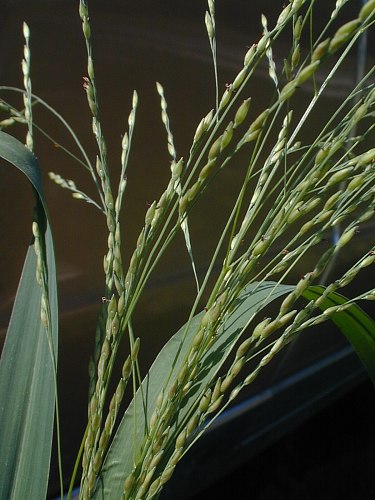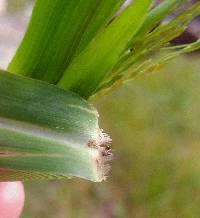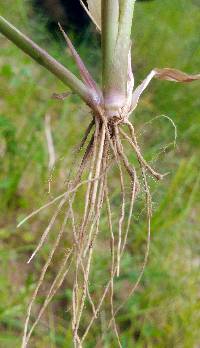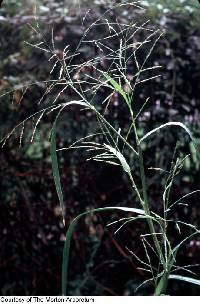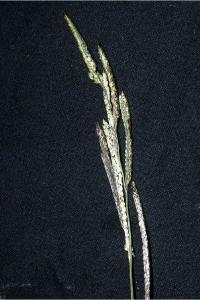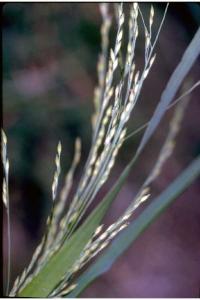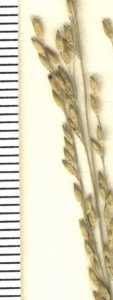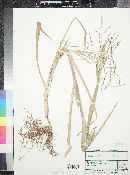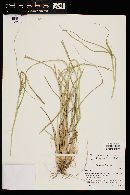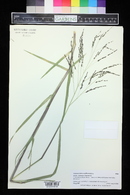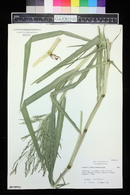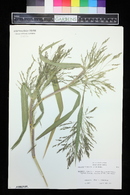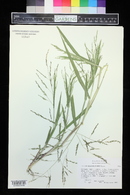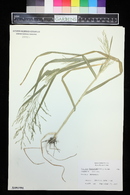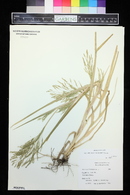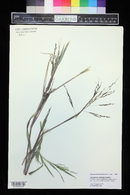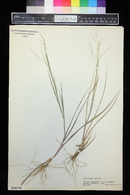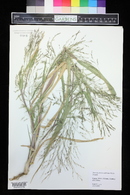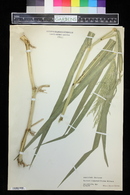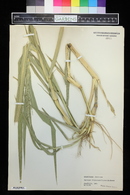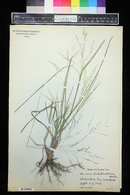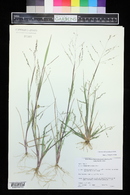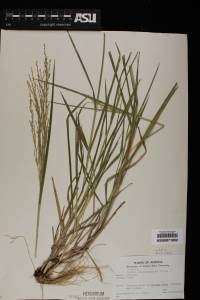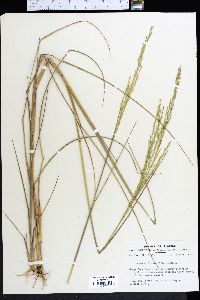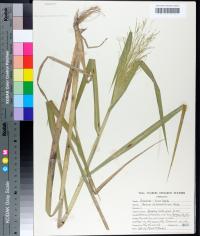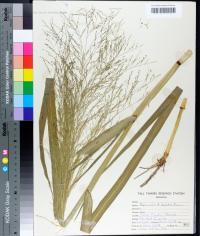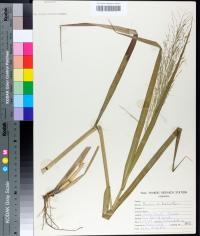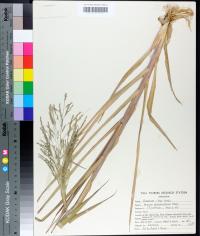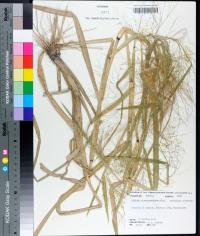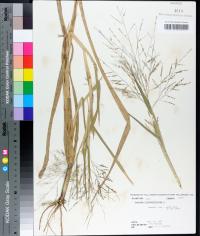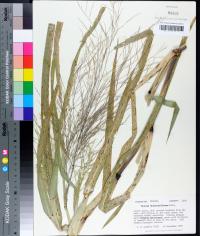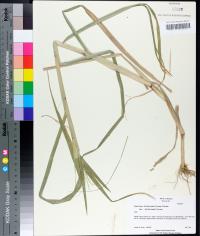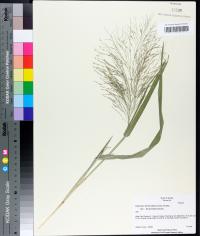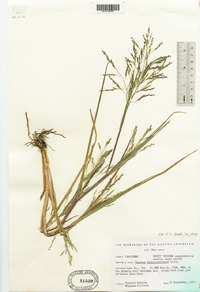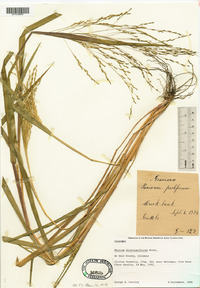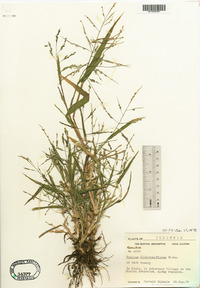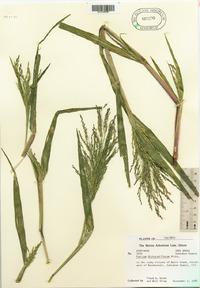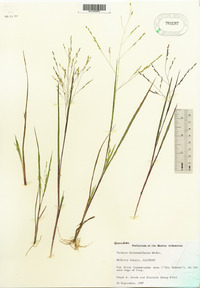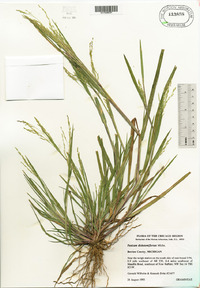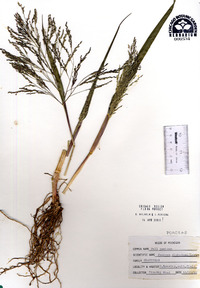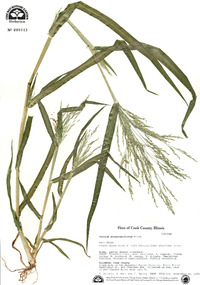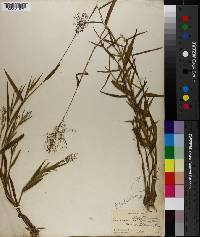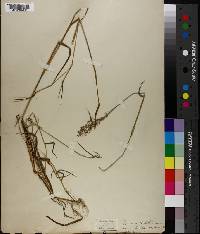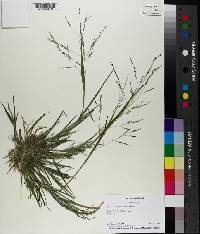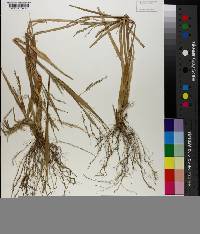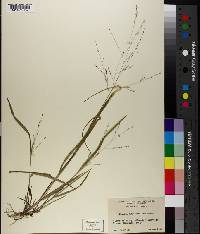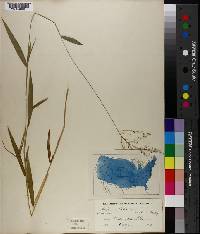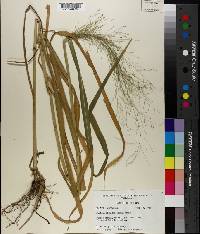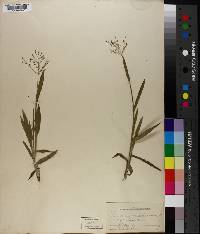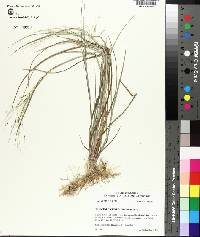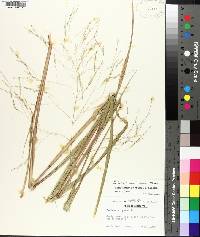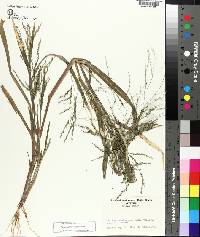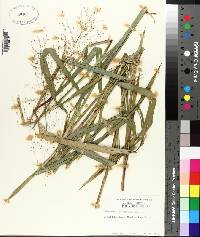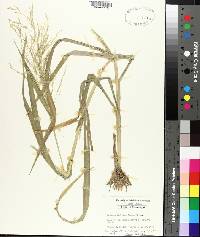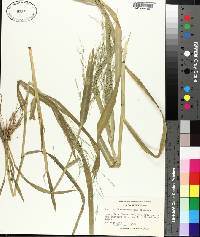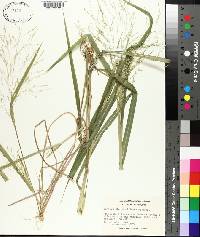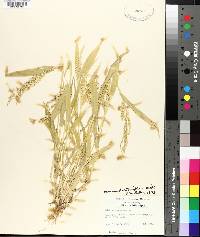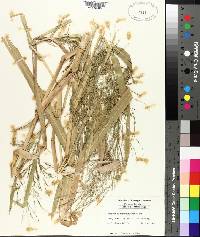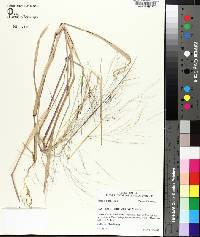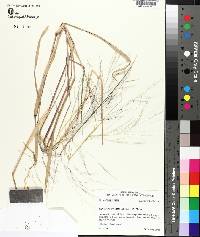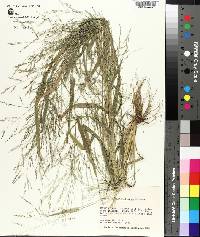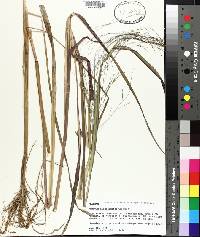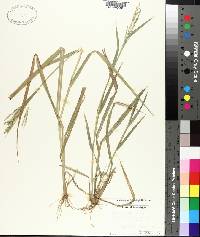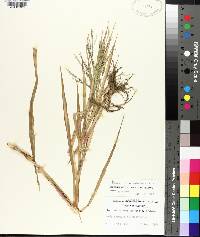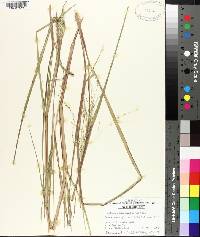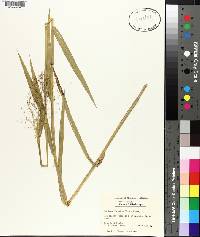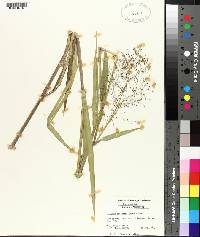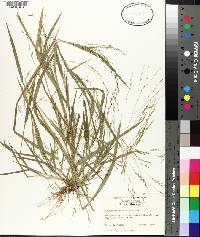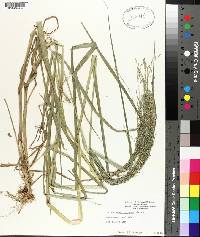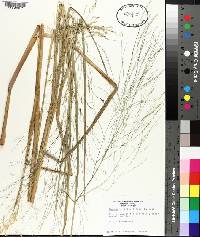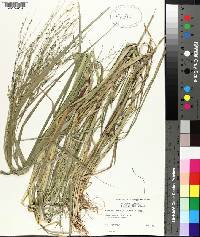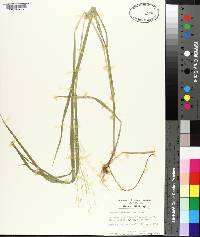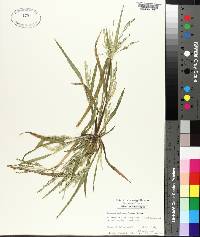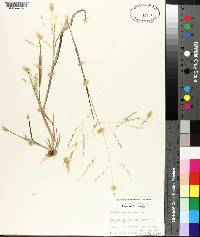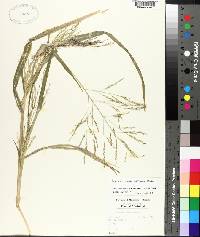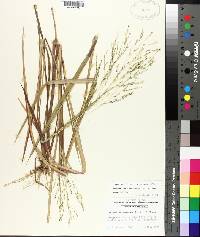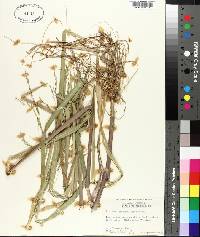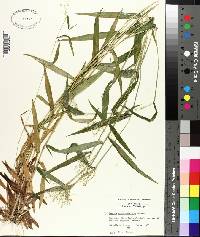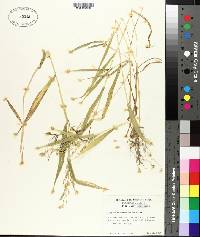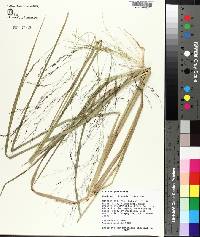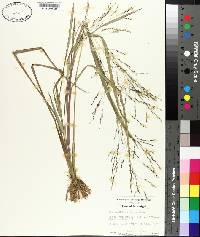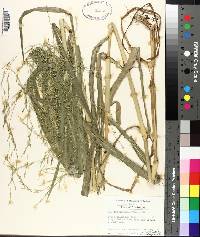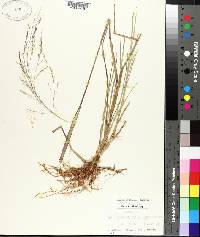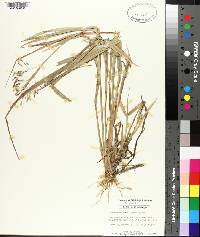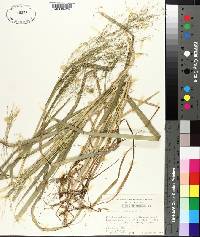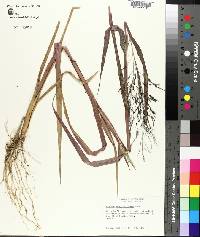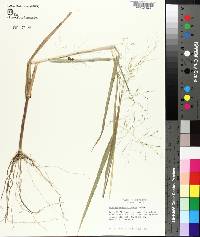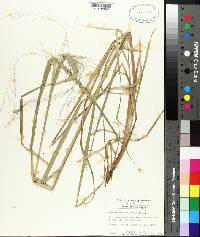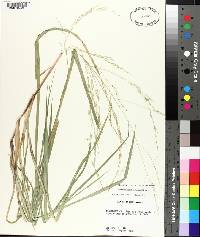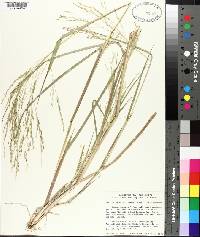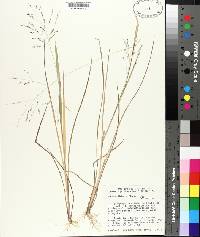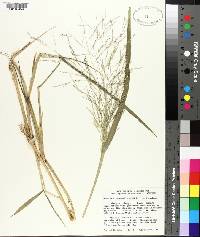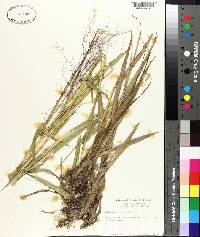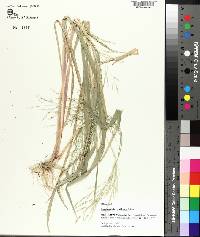Panicum dichotomiflorum
|
|
|
|
Family: Poaceae
Autumn Panic Grass, more...fall panicgrass, fall panic, fall panicum, western witchgrass, Panic d'Automne
[Leptoloma dichotomiflora Smyth, morePanicum ammophilum Trin. ex Nees, Panicum amplectens Chapm., Panicum aquaticum var. chloroticum (Nees ex Trin.) R.C. Foster, Panicum brachiatum Bosc ex Spreng., Panicum chloroticum Nees ex Trin., Panicum chloroticum var. agreste Nees ex Trin., Panicum chloroticum var. luxurians Döll, Panicum chloroticum var. pingue Nees, Panicum chloroticum var. sylvestre Nees, Panicum elliotii Trin. ex Nees, Panicum francavillanum E. Fourn., Panicum proliferum var. chloroticum (Nees ex Trin.) Hack., Panicum proliferum var. geniculatum Alph. Wood, Panicum proliferum var. pilosum Griseb., Panicum proliferum var. richardii Döll, Panicum proliferum var. strictum Griseb., Panicum proliferum var. xanthochlorum Hack. ex Bertoni, Panicum retrofractum Delile ex Desv.] |
Annual or short-lived perennial herb, tufted 5 cm - 2 m tall Leaves: alternate, two-ranked. Sheaths compressed, inflated, sometimes sparsely hairy. Ligules 0.5 - 2 mm long, membranous, fringed with hairs. Blades 10 cm - 0.6 m long, 3 mm - 2.5 cm wide, lance-shaped, parallel-veined, sometimes sparsely soft-hairy, with stout, whitish midribs. Inflorescence: a branched arrangement of spikelets (panicle), lax, diffuse, 4 - 40 cm long, with stiff, solitary branches and a few spikelets. Branches alternate or opposite, sometimes appearing whorled, spreading to ascending, to 15 cm long, rough. Spikelet stalks appressed mainly to one side of the branch, 1 - 6 mm long, sharply three-angled, rough. Fruit: a caryopsis, indehiscent, enclosed within the persistent lemma and palea. Culm: upright to decumbent, often knee-like to ascending, unbranched to widely branched, green to purplish, 5 cm - 2 m long, 0.5 - 3 mm wide, slightly compressed, often succulent, shiny, lower nodes rooting when in water. Nodes often swollen. Spikelets: light green to reddish purple, 2 - 4 mm long, 0.5 - 1 mm wide, ellipsoid to narrowly egg-shaped with a pointed apex. Glumes: unequal, herbaceous. Lower glumes clasping, 0.5 - 1 mm long, one-fourth to one-third as long as spikelets, blunt to pointed at the apex, zero- to three-veined. Upper glumes similar to lower lemmas, exceeding upper florets by about 0.5 mm, seven- to nine-veined. Lemmas:: Lower lemmas similar to upper glumes, exceeding upper florets by about 0.5 mm, seven- to nine-veined, keeled. Upper lemmas shiny, with rolled-up margins on the upper surface. Paleas:: Lower paleas rudimentary to nearly as long as lower lemmas, transparent. Upper paleas longitudinally lined. Florets:: Lower florets sterile. Upper florets bisexual, straw-colored to blackish, 1.5 - 2.5 mm long, about 1 mm wide, narrowly ellipsoid with a pointed apex, shiny, pale-veined. Anthers three. Stigmas red. Similar species: No information at this time. Flowering: mid-August to late October Habitat and ecology: One of the most common grasses in the Chicago Region, often growing in disturbed areas such as cultivated fields, ditches, and roadsides. Occurence in the Chicago region: native Etymology: Panicum comes from the Latin word panis, meaning bread, or panus, meaning "ear of millet." Dichotomiflorum means "with a forking inflorescence." Author: The Morton Arboretum Glabrous annual to 1 m or more, erect to decumbent or diffuse; panicle in large plants to 4 dm, widely branched; lf-blades 4-20 mm wide; spikelets 1.6-3.3 mm, green or purple-tinged, ellipsoid to oblong; first glume broad, obtuse or rounded, a third as long; second glume and sterile lemma acute, 7-veined, the latter with or without a palea; 2n=36, 54. Moist soil and shores, often a weed in cult. land; N.S. and Que. to Minn. and S.D., s. to Fla. and Tex. Gleason, Henry A. & Cronquist, Arthur J. 1991. Manual of vascular plants of northeastern United States and adjacent Canada. lxxv + 910 pp. ©The New York Botanical Garden. All rights reserved. Used by permission. |
|
|
|

